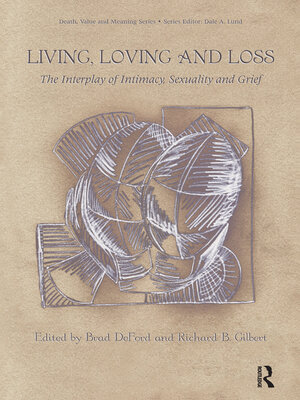Living, Loving and Loss
ebook ∣ The Interplay of Intimacy, Sexuality and Grief · Death, Value and Meaning Series
By Brad DeFord

Sign up to save your library
With an OverDrive account, you can save your favorite libraries for at-a-glance information about availability. Find out more about OverDrive accounts.
Find this title in Libby, the library reading app by OverDrive.



Search for a digital library with this title
Title found at these libraries:
| Library Name | Distance |
|---|---|
| Loading... |
One of the unspoken aspects of mourning concerns the ways that loss affects our intimate relationships and our sexual expressiveness. This text opens these subjects for conversation, with the aim of promoting the trust, care, and respect that enable us to be vulnerable. It purposefully covers a range of topics, including: (1) the meaning of intimacy and the significance of sexuality, providing a basis for the use of these terms throughout the book; (2) death, grief, and differences in sexual orientation, including death and intimacy in the lesbian, gay, bisexual, and transgender (LGBT) community and the losses endured by young people due to gender issues; (3) loss of relationship and restoration of intimacy in families, including pharmacological effects on the grief processes of widowers; grieving a not-so-loved parent; the "layered losses" of infertility and intimacy; and the tolls of war—intimacy and sexuality challenges for soldiers and their families; (4) adjusting to life's losses associated with aging or illness or infirmity, including Alzheimer's and dementia-related illnesses, physical health losses after 50, and intimacy, sex, and hospice—self-determination and dignity at the end of life; and (5) religious bases that have shaped our perspectives for understanding intimacy, sexuality, and healing after loss, and which give us hope—including the spiritual reflections of a rabbi and a Christian voice in defining what is right. Set in a framework that is both psychological and spiritual, the well-researched contributions are intended to acknowledge these experiences both professionally and personally. The book concludes with an extensive bibliography, valuable for research and reference.
This book will be of value in undergraduate and graduate courses on thanatology, as well as for anyone interested in knowing more about grief—both those currently bereaved and those who wish to support others in mourning. The contributors appreciate both the importance of our capacities for intimacy and sexuality and our inhibitions and hesitations in giving voice to our needs and concerns, perhaps especially when we are grieving. The information and compassionate understanding they provide encourage us to bridge the gap between the secret and the private and to share what is close to our hearts.
This book will be of value in undergraduate and graduate courses on thanatology, as well as for anyone interested in knowing more about grief—both those currently bereaved and those who wish to support others in mourning. The contributors appreciate both the importance of our capacities for intimacy and sexuality and our inhibitions and hesitations in giving voice to our needs and concerns, perhaps especially when we are grieving. The information and compassionate understanding they provide encourage us to bridge the gap between the secret and the private and to share what is close to our hearts.







